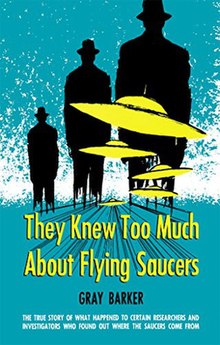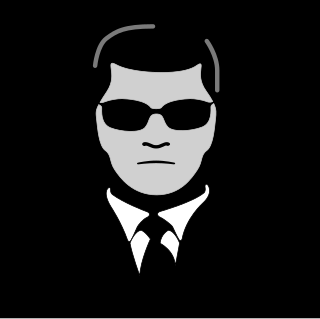
In popular culture and UFO conspiracy theories, men in black (MIB) are government agents dressed in black suits, who question, interrogate, harass, threaten, allegedly memory-wipe or sometimes even assassinate unidentified flying object (UFO) witnesses to keep them silent about what they have seen. The term is also frequently used to describe mysterious men working for unknown organizations, as well as various branches of government allegedly tasked with protecting secrets or performing other strange activities.
UFO conspiracy theories are a subset of conspiracy theories which argue that various governments and politicians globally, in particular the United States government, are suppressing evidence that unidentified flying objects are controlled by a non-human intelligence or built using alien technology. Such conspiracy theories usually argue that Earth governments are in communication or cooperation with extraterrestrial visitors despite public disclaimers, and further that some of these theories claim that the governments are explicitly allowing alien abduction.

John Alva Keel, born Alva John Kiehle, was an American journalist and influential ufologist who is best known as author of The Mothman Prophecies.

The Roswell incident is a collection of events and myths surrounding the 1947 crash of a United States Army Air Forces balloon, near Roswell, New Mexico. Operated from the nearby Alamogordo Army Air Field and part of the top secret Project Mogul, the balloon's purpose was remote detection of Soviet nuclear tests. After metallic and rubber debris was recovered by Roswell Army Air Field personnel, the United States Army announced their possession of a "flying disc". This announcement made international headlines but was retracted within a day. Obscuring the true purpose and source of the crashed balloon, the Army subsequently stated that it was a conventional weather balloon.
Dulce Base is the subject of a conspiracy theory claiming that a jointly-operated human and alien underground facility exists under Archuleta Mesa on the Colorado–New Mexico border near the town of Dulce, New Mexico, in the United States. Claims of alien activity there first arose from Albuquerque businessman Paul Bennewitz.
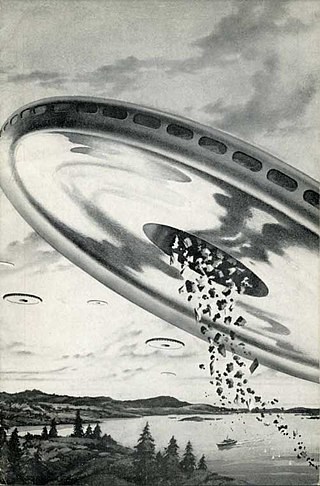
The "Maury Island incident" refers to claims made by Fred Crisman and Harold Dahl of falling debris and threats by men in black following sightings of unidentified flying objects in the sky over Maury Island in Puget Sound. The pair would later claim the events had occurred on June 21, 1947.

Paul Frederic Bennewitz, Jr. was an American businessman and UFO investigator. According to multiple sources, Bennewitz was the target of a government disinformation campaign that ultimately led to his psychiatric hospitalization.

Nicholas Redfern is a British best-selling author, journalist, cryptozoologist and ufologist.
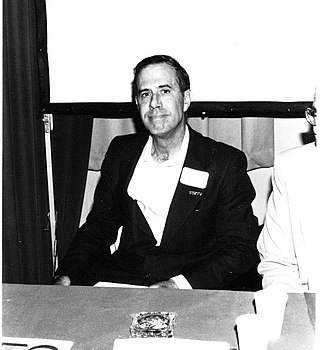
James Willett Moseley was an American observer, author, and commentator on the subject of unidentified flying objects (UFOs). Over his nearly sixty-year career, he exposed UFO hoaxes and engineered hoaxes of his own. He was best known as the publisher of the UFO newsletters Saucer News and its successor Saucer Smear, which became the longest continuously published UFO journal in the world.

Gray Barker was an American writer best known for his books about UFOs and other paranormal phenomena. His 1956 book They Knew Too Much About Flying Saucers introduced the notion of the Men in Black to ufology. Recent evidence indicates that he was skeptical of most UFO claims, and mainly wrote about the paranormal for financial gain. He sometimes participated in hoaxes to deceive more serious UFO investigators.

A Culture of Conspiracy: Apocalyptic Visions in Contemporary America is a 2003 non-fiction book written by Michael Barkun, professor emeritus of political science at the Maxwell School of Citizenship and Public Affairs.

Albert K. Bender, author of the 1962 nonfiction book Flying Saucers and the Three Men, was a ufologist. He served in the United States Army Air Forces during World War II. He was obsessed with the UFO phenomenon and became a UFO researcher, founding the International Flying Saucer Bureau. In 1965, he founded the Max Steiner Music Society.

Jesse Antoine Marcel Sr. was a lieutenant colonel in the United States Air Force who helped administer Operation Crossroads, the 1946 atom bomb tests at the Bikini Atoll.
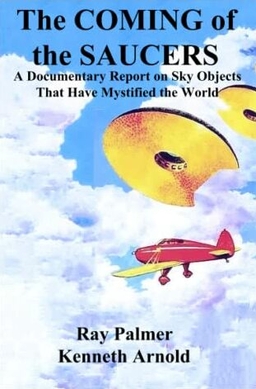
The Coming of the Saucers is a 1952 book by original 'flying saucer' witness Kenneth Arnold and pulp magazine publisher Raymond Palmer. The book reprints and expands early articles the two had published in Palmer's Fate magazine. The work blends first-person accounts attributed to Arnold with third-person summations of UFO reports.

John Olsen Lear, son of Learjet magnate Bill Lear, was an aviator who set multiple records, later flying cargo planes for the CIA during the Vietnam era.
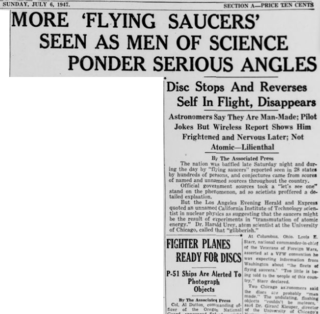
The 1947 flying disc craze was a rash of unidentified flying object reports in the United States that were publicized during the summer of 1947. The craze began on June 24, when media nationwide reported civilian pilot Kenneth Arnold's story of witnessing disc-shaped objects which headline writers dubbed "Flying Saucers". Such reports quickly spread throughout the United States; historians would later chronicle at least 800 "copycat" reports in subsequent weeks, while other sources estimate the reports may have numbered in the thousands.

The Rhodes UFO photos, sometimes called the shoe-heel UFO photos, are two photos that were reportedly taken on July 7, 1947 by amateur astronomer and inventor William Albert Rhodes. The photographs purport to show a disc-like object flying above Phoenix, Arizona. Rhodes's account and photographs were published by the Arizona Republic on July 9.

The Flying Saucer Conspiracy is a 1955 book authored by early UFO researcher Donald Keyhoe. The book pointedly accused elements of United States government of engaging in a conspiracy to cover up knowledge of flying saucers. Keyhoe claims the existence of a "silence group" of orchestrating this conspiracy.

The Report on Unidentified Flying Objects is a 1956 book by then-retired Air Force UFO investigator Edward J. Ruppelt, detailing his experience running Project Bluebook. The book was noted for its suggestion that a few UFO sightings might be linked to spikes of atomic radiation. Contemporary media summarized four topics discussed in the book:
